| Article ID | Journal | Published Year | Pages | File Type |
|---|---|---|---|---|
| 1740085 | Nuclear Engineering and Technology | 2014 | 10 Pages |
Wall-thinned defects caused by accelerated corrosion due to fluid flow in the inner pipe appear in many structures of the secondary systems in nuclear power plants (NPPs) and are a major factor in degrading the integrity of pipes. Wall-thinned defects need to be managed not only when the NPP is under maintenance but also when the NPP is in normal operation. To this end, a test technique was developed in this study to detect such wall-thinned defects based on the temperature difference on the surface of a hot pipe using infrared (IR) thermography and a cooling device. Finite element analysis (FEA) was conducted to examine the tendency and experimental conditions for the cooling experiment. Based on the FEA results, the equipment was configured before the cooling experiment was conducted. The IR camera was then used to detect defects in the inner pipe of the pipe specimen that had artificially induced defects. The IR thermography developed in this study is expected to help resolve the issues related to the limitations of non-destructive inspection techniques that are currently conducted for NPP secondary systems and is expected to be very useful on the NPPs site.
